======= Home =======.
I found three pictures of the catoblepas from illuminated manuscripts from the VM's time.
Cantimpré De natura rerum [MS. 411] brugge catheblepa [1450-1500] .jpg
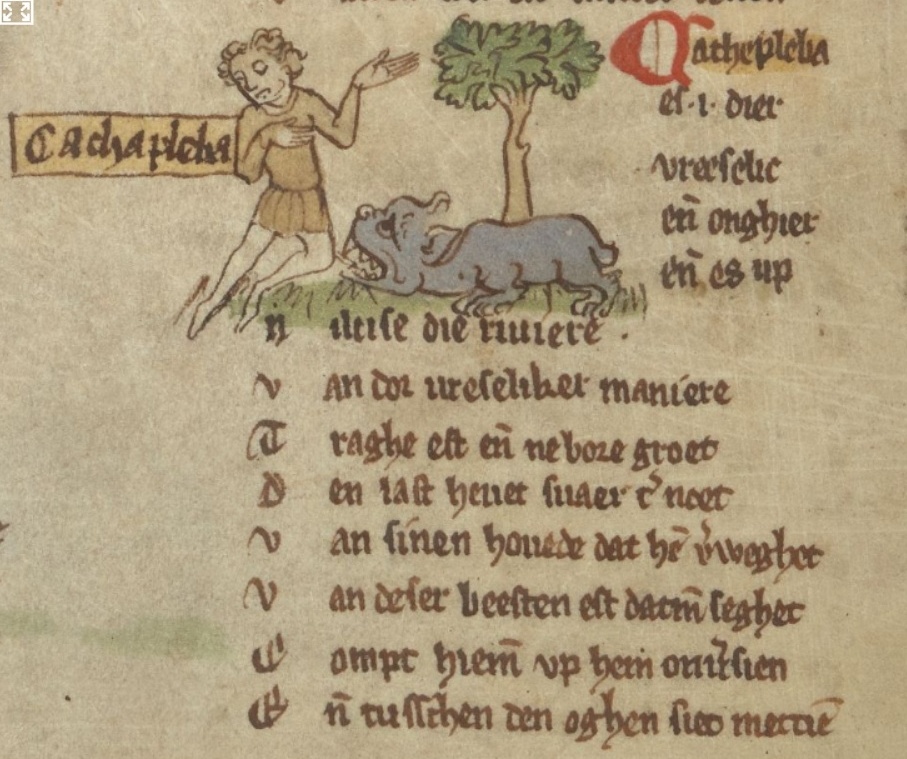
cathepleba [1325-1530] Maerlant British Libray 11v.jpg
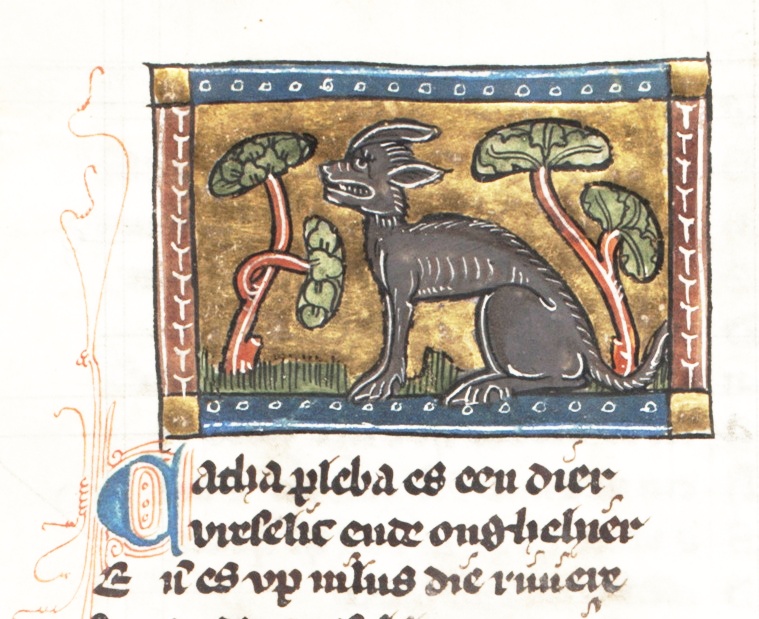
Cathapleba
Der naturen bloeme - Jacob van Maerlant - KB KA 16 - 053v-054r [ca 1350]
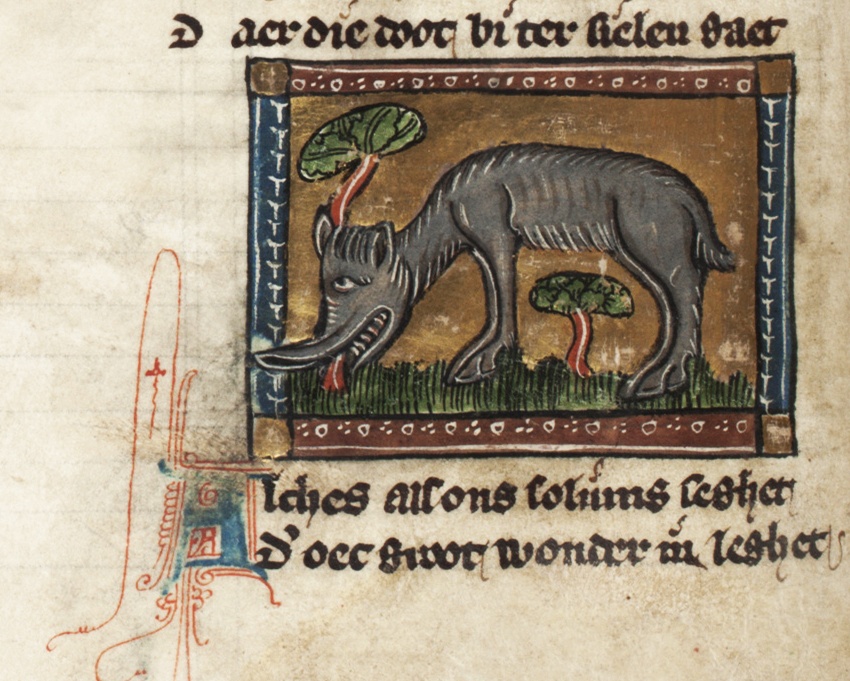
This animal, Alches, is often erroneously pictured as van Maerlant's Cathapleba"
From "Der naturen bloeme" - Jacob van Maerlant - KB KA 16 - f046v [ca 1350]
Topsell's is from 1607
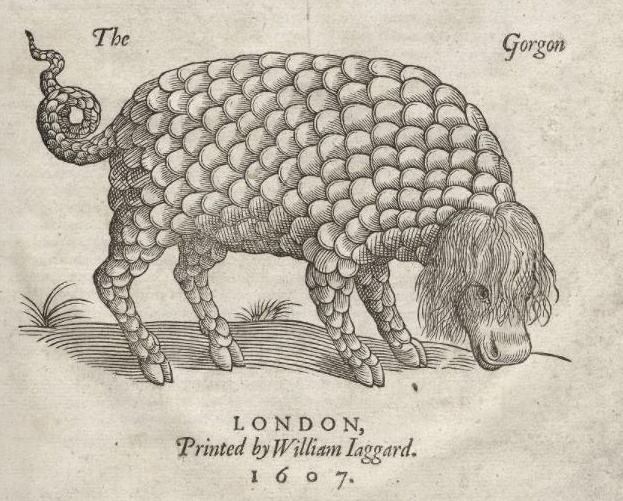
Topsell 1607.jpg
... and here is one from 1647:

Jan Jonston 1603-1675 Historia Naturalis de Quadrupedibus Amsterdam 1647.jpg
Click here for an old picture of the Gnu (Wildebeest) that seems to have been the origin of the catoblepas legend.
These modern versions have their head as close to the ground as the f80v seems to do :-)
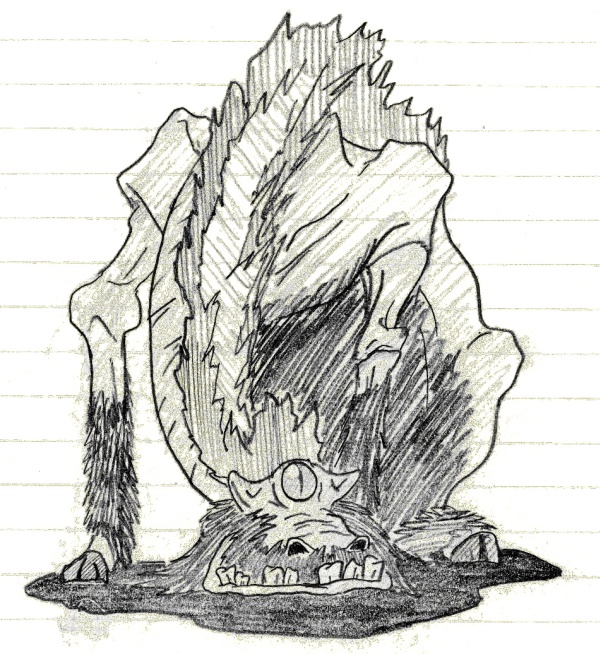

Linda Snider propsed the animal to be a Capra Ibex, a sort of goat living in the Alps and known to survive a fall on its head.
This one is from MS. Bodley 764, Folio 14v.
Is is shown upright in its "mythical position" with horns pointing down, whereas f80v then seems to have fallen over...

Fighting goats are in a similar position as the f80v creature.
It could be a goat, about to attack...
F80v has same type of short pointed horns.

As to the "scales" of f80v, that could well be the way its fur is represented in the drawing.
See for an overview here
Ger Hungerink 9 June 2019
- edited 29 June 2019.